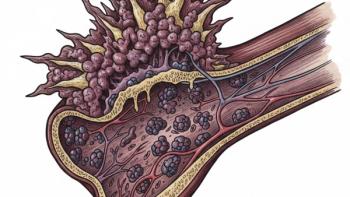
- CURE® Fall 2021
The Myeloma Nurse Who Climbed a Mountain to Connect With Her Patients
Myeloma survivors, their loved ones and clinicians trekked up the Alaska-Kenai Peninsula to raise money and funds for the disease, offering one nurse the inspiration she needed after more than a year of the COVID-19 pandemic.
As the COVID-19 pandemic continues to put added stress on health care workers across the nation, one New York City-based nurse practitioner reconnected with her passion for treating patients in an unlikely place: hiking in Alaska alongside myeloma survivors, their loved ones and other clinicians.
“(COVID-19) had hit New York City hard. We all got redeployed to the front lines, and I think it was a really hard spring 2020 — a lot of health care professionals retired shortly after that,” said Donna Catamero, associate director of myeloma translation research at Mount Sinai Health System, in an interview with CURE®. “I felt like I never got my mojo back. ... I really needed a jolt to get me inspired again.”
That “jolt” was found this past August when Catamero participated in the Moving Mountains for Multiple Myeloma program, a joint initiative between the Multiple Myeloma Research Foundation (MMRF) and CURE® to raise funds and awareness for myeloma. This year’s fundraising effort took a team of 12 individuals on a journey hiking through Alaska’s Kenai Peninsula. Previous treks included Kilimanjaro, Everest Base Camp (in Nepal), Machu Picchu, the Grand Canyon and Mount Fuji.
Catamero was joined by a dozen other people who also share the drive to improve outcomes for individuals with myeloma — including five patients currently living with myeloma — for the five-day trek that spanned 37 miles. She recently discussed the climb in an interview with CURE®.
How did you hear about the MMRF program, and what was your first reaction?
It was a few years ago. I worked with the MMRF on research studies. I run the clinical trials program in our network sites. We’re focusing on bringing novel therapies to underserved areas. ... They were having a trek in Machu Picchu. (I) and some of my colleagues were really excited about (it), so we joined in.
I did my first hike ... and I thought it was really inspiring to hike alongside patients and their caregivers.
And this next opportunity came ... to (hike) in Alaska, and I said, “I think (it) would be good for me to do (this) on my own.” It was such a great experience, even more so than Machu Picchu, because I really got to know the patients and their caregivers. And it really was inspiring. It gave me a little boost to rejuvenate my career, meaning it gave me more inspiration and the boost I needed post-COVID-19 slump.
How did the fellow climbers — especially the myeloma survivors — encourage you throughout the climb?
I’m helping them, they’re helping me. And seeing what they go through on a day-to-day basis and seeing them being able to do these (difficult) climbs ... really was inspiring. It gave me a different perspective, and I was able to walk in their shoes because (at work), I go into an exam room, I talk to patients about their cancer, their treatments, their side effects, how to manage it, but (I) don’t see the day-to-day life of a patient. This gave me the opportunity to really experience everything outside of the clinic with them. So, you know, we laughed, we joked, we cried together. It was really inspiring.
What do you hope for these patients — and the myeloma field as a whole — in coming years?
I started (my career) in clinical research. When I started, the overall survival of a myeloma patient, regardless of their risk factors, was about three years. So patients did not do well. And this was in the mid-’90s. And now patients are living 10, 15, even 20 years out from their diagnosis. And, you know, this is all within my lifetime.
I still have a lot of life to live. So I hope that if we can’t see a cure, I feel like myeloma will be — and it is to some (extent) — a chronic disease that can be managed well while patients are maintaining a really good quality of life.
For more news on cancer updates, research and education, don’t forget to
Articles in this issue
over 3 years ago
Leptomeningeal Disease: A Rare Cancer Metastasisabout 4 years ago
When Cancer Treatments Stop Working: Is it the End of the Line?about 4 years ago
Love Lost: The Effects of Cancer on Marriage and Relationshipsabout 4 years ago
Keeping Hope in Your Back Pocket as a Patient With Cancerabout 4 years ago
Pregnancy During Cancer: Treating Two Patients, Not Oneabout 4 years ago
Cancer Researchers Are Expanding Options for Brain Metastases




